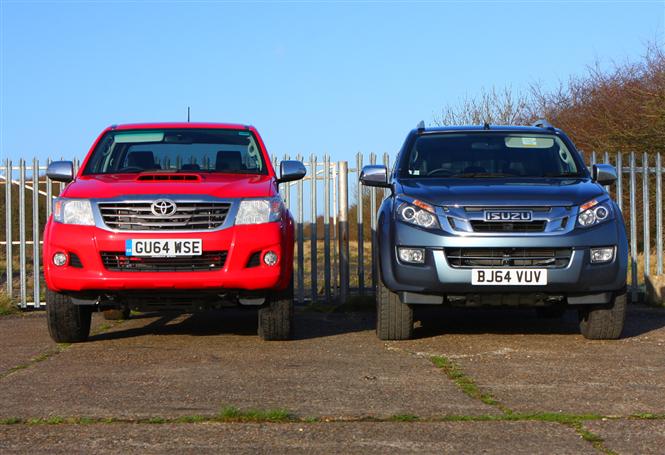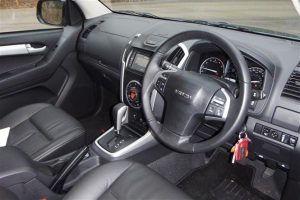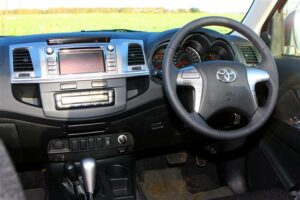The latest Isuzu DMAX beats the Hilux for one very simple reason: it is more comfortable than the Hilux.
Every single example of the two cars I have driven yielded the same outcome: the ride in the DMAX is a lot less jarring compared with the Hilux, whether single cab or double.
Climbing into the cab is slightly easier on the D-Max as it sits lower, but both are level-pegging in terms of driving position and visibility. The D-Max features the more luxurious, and easier to clean, leather upholstery, while the Hilux has netted cloth seats.
Both vehicles boast a touchscreen display with satellite navigation, air conditioning, rear parking sensors and cameras.
The infotainment system on the Hilux is very simple and user-friendly, while the Pioneer system on the D-Max is too complicated for its own good and the satellite navigation has some tedious features.
the D-Max is finished a lot better. The gearstick, handbrake and steering are smooth to operate, while the same features on the Hilux feel dated, and the gearstick feels notchy. The D-Max also claims greater storage space, including a decent size cubby box between the seats and a couple of small ones integrated in to the dashboard.
Cargo Capacity
While the D-Max is both longer than the Hilux, the Hilux’s shorter nose means that, surprisingly, it has the longer load space. Up to 60mm longer loads (1,545mm v 1,485mm) can be carried in the Hilux, although the D-Max is slightly wider at 1,530mm (Hilux: 1,515mm).
The turbo in the DMAX is not problematic, at least not as far as I know. Run it as you would any other turbocharged engine (install a timer, use the right oil, and avoid overloading the turbo with insane throttle applications) and it will serve you faithfully.
The DMAX comes from the dealer with both high-riding and low-riding formats for the single-cab.
Toyota also has both, but locally, the high-riding single cab was discontinued, I don’t know why. In case it has been reinstated, they should let us know.
On costs, the Hilux is dearest and the D-MAX is cheapest. When it comes to spares, it is good to note that the two cars are franchised. That means that you can get your spare issues sorted at General Motors for the DMAX and Toyota Kenya for the Hilux.
If you can a petrol version of these two cars, the better. On the best engine type, I would say petrol. It might cost more to fuel, but petrol engines have longer service intervals and are less prone to structural and mechanical strains.
The robust build of diesel engines may make them long lasting, but not as much as petrol engines.
Whereas the 3-litre engine in the Hilux is half a litre bigger than the 2.5-litre D-Max, there’s only 8bhp (Hilux 169bhp and D-Max 161bhp) separating the two models. However, it’s the D-Max which comes out on top for pulling power, with 400Nm compared to 360Nm of the Hilux, although the two are very evenly matched in both respects.










